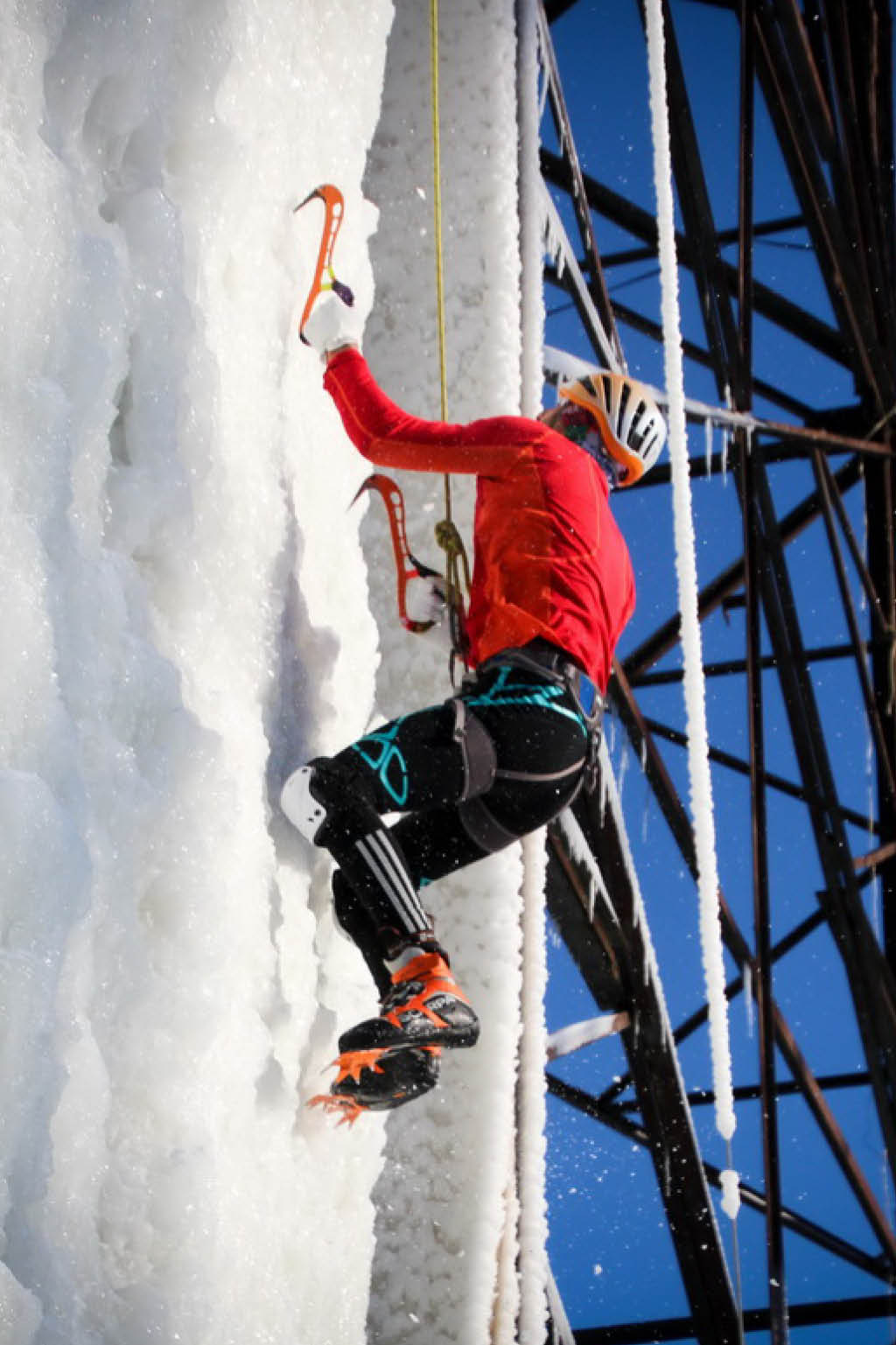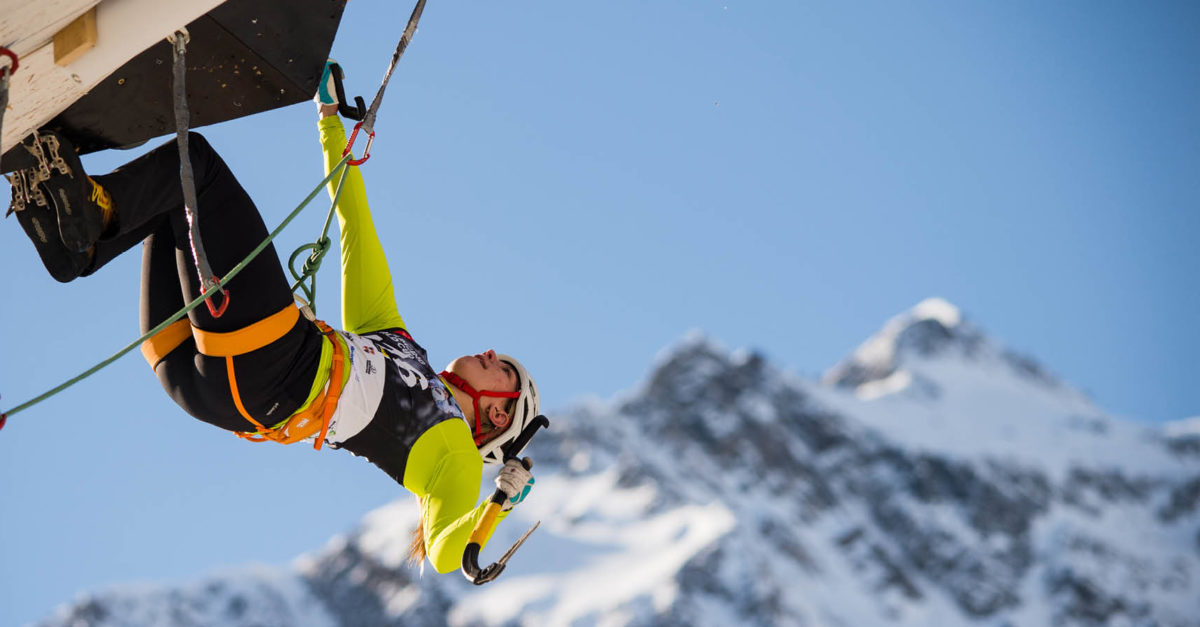An Icy Ascent
Colorado is world-famous for its majestic, snow-covered winter landscape. Its altitude and the mountainous terrain that runs through some of the state’s largest and most exciting cities make it the ideal location for extreme winter sports like snowboarding and skiing.
During the last week of February 2019, some 150 athletes will gather in Denver for a very different kind of cold-weather sport—one that has never been seen at this scale in the US before.
Ice climbing has been a highly popular pastime in Europe, particularly in countries throughout the Alps, since the early 1900s. Now governed by the ice climbing arm of the International Climbing and Mountaineering Federation (UIAA), the sport has been slowly rising to prevalence as the UIAA pushes for a spot in the 2026 Winter Olympics.
A big step in raising awareness for the sport in the US will come as Denver hosts the last of two 2019 Ice Climbing World Cups. Thousands of spectators will have an opportunity to witness the extreme nature of ice climbing in person, and American athletes will get the chance to compete on the international stage in front of a home crowd.
Two Paths to the Top
Ice climbing got its roots in Colorado by way of the Ouray Ice Festival—a gathering of ice climbing enthusiasts that takes place in the southwest mountain town of Ouray each January. The festival brings thousands of participants from around the world for demonstrations, competitions, and vendor exhibitions—among other attractions—and has helped bring about a love for the sport that remains strong in Colorado. Recognition of ice climbing as an official sport came during the 1990s, with competitions across Europe and Russia, eventually culminating in the first World Cup competition in 2002.
Since official rules and regulations were established, ice climbing has been divided into two disciplines: lead and speed. “Lead is all about difficulty—who can climb the highest on predetermined courses, created by ‘route setters,’” says Rob Adie, UIAA event coordinator. “Only the best climbers should be able to reach the top in this discipline at the finals.” Lead competitors have to scale extremely steep ice walls with features like hanging ice barrels, and, in order to safely reach the top, they need to plot safety points throughout the route.
The walls are made from a combination of wood panels and ice blocks, and climbers use various tools such as ice axes and specialty shoes fitted with crampons—picks bolted to the sole of their boots—to climb more efficiently.
Speed competitors are typically able to scale the fifteen-meter ice walls in under eight seconds, and also use ice axes and special footwear, though the axes and footgear differ slightly from those used in lead competitions. Speed climbers will typically scale the ice wall with their legs perched at a ninety-degree angle for maximum grip. With no time to waste, these competitors have immense dexterity in their hands and feet, as well as extreme upper body strength to propel their body weight up the wall.
Due to the level of difficulty in both disciplines, athletes have to be able to manipulate their bodies into unbelievable positions, using only their ice ax, hands, and feet. Climbers can be disqualified for anything from a fall to crossing over the established boundary lines. It’s not simply a straight ascent to the top, but a climb full of physical and mental obstacles.
Adie says that, while some climbers compete in either lead or speed events exclusively, the majority compete in both. The World Cup competitions take place over the course of two days, with qualifying rounds on Saturday and finals on Sunday. The finals of the speed competition are a knockout-style, head-to-head event, which Adie says should be particularly exciting to watch. And for ice climbing enthusiasts who can’t make it to Denver for the competition, UIAA and Olympic channels will be broadcasting the two-day event live, as well as on the Extreme Facebook channel.
Preserving the Sport
Ice climbing was not always an internationally competitive sport. It came from a love of the mountains, the beauty of nature, and pushing the limits of human exploration. In the spirit of the original ice climbers, the UIAA and similar organizations have placed emphasis on protecting the mountains on which the sport originated.
The UIAA also encompasses the sports of mountaineering and sky running, with athletes across all disciplines working together for the betterment of alpine climates all over the world. Since 2015, the Respect the Mountains project has connected more than 1,000 volunteers across nine countries to clean up the ecosystems around the world’s mountains. The program helps to raise awareness for the protection of these environments and their importance in the overall health of the planet. Since it was established, volunteers have collected more than seven tons of waste.
The organization also encourages individual groups, businesses, and mountain lovers to get involved through their own projects and highlights the work of a number of groups each year for their service. A winner is selected based on the impact it has brought throughout the year to the world of conservation. Past winners have included the US-based Mount Everest Biogas project, which developed solutions for the impact of waste in high altitude environments, and the French organization Mountain Wilderness, which is working to remove manmade structures throughout the Alps that are no longer in use.
Stewards and Athletes
As ice climbing grows in popularity all over the world, competitors have become more than just athletes, they have become stewards of the sport and of the mountains which first sparked their interest.
Though most people would never even consider scaling a nearly fifty-foot ice wall, it’s the sheer adrenaline that draws many alpinists to attempt the impossible in a display of ultimate strength and determination. It has taken the beloved pastime of mountain climbing to new heights, on a personal level for competitors and a global level for the growing number of spectators interested in the sport. “It’s absolutely fantastic to have an event in North America, especially right outside City Hall in Denver,” says Adie. “It’s an incredible way to showcase this amazing sport to the American public, who may not have been exposed to it before—a great step forward for the World Cup Tour and for ice climbing in the US.”
For more info, visit theuiaa.org/ice-climbing.









